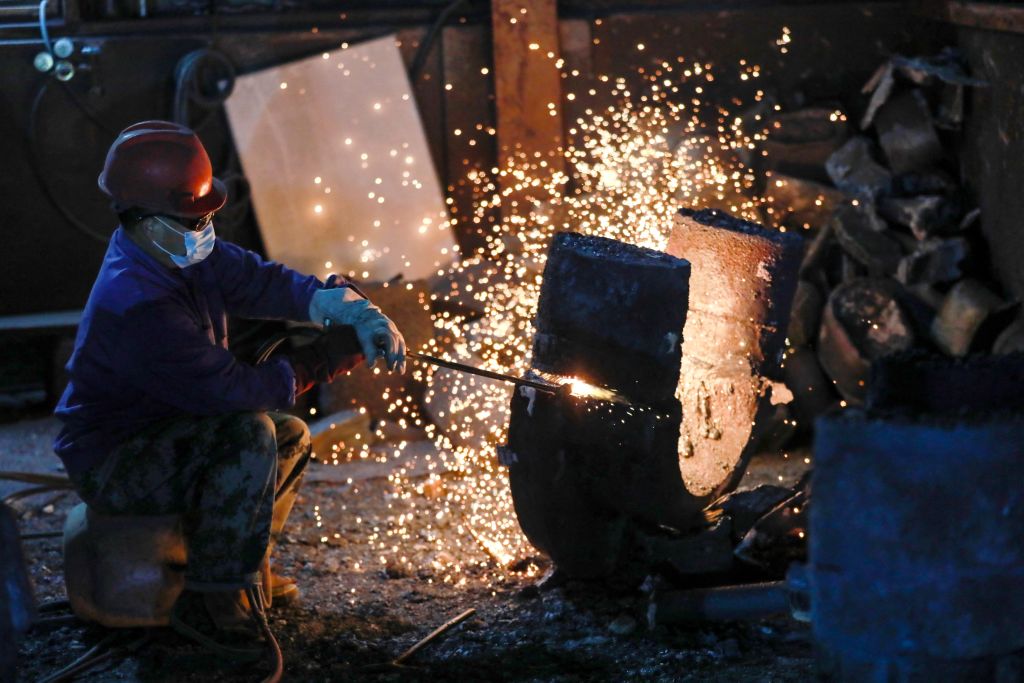Trade war with China: What you need to know
The U.S. and Chinese governments have doubled down in an escalating trade dispute, with the U.S. threatening to impose tariffs on up to $153 billion of imports from China. Here's what you need to know about the ongoing tussle.
The tit-for-tat is escalating. President Donald Trump on Thursday said he would consider adding another $100 billion worth of products to the list of Chinese imports potentially subject to tariffs.
This was two days after the U.S. released a list of 1,300 products it proposed hitting with tariffs, totaling about $50 billion in trade. China wasted no time saying it would punch back with $50 billion in tariffs on 106 products it imports from America.
If the U.S. follows through, that would mean $153 billion in Chinese imports would be subject to tariffs. China has promised to respond in kind, but it would be unable to match that amount since it imported only $130 billion of U.S. goods last year.
The products on the latest U.S. list include heavy machinery, motorcycles and high-tech items, such as semiconductors and batteries. Reuters calculates that the top five products affected are color TVs, cars, copier parts, aluminum alloy plates and hard drives.
China's list names cars, aircraft, soybeans, corn, sorghum, whiskey, beef, tobacco, cotton and plastic products, according to a CNBC translation.
We're in Round 3 of the mini-trade war that has already begun: The U.S. last month announced tariffs on imports of steel and aluminum, in part targeting China. In response, China on Sunday slapped tariffs on $3 billion on agricultural products from the U.S. including hog parts, wine, fruit and nuts.
The U.S. is targeting China for unfair trade practices and the trade deficit. The U.S says China treats American companies unfairly by restricting access to its markets and stealing proprietary technology. The U.S. buys $506 billion worth of goods from China but only exports $130 billion, leaving a trade deficit of $375 billion between the two countries. President Donald Trump has said that China must shave $100 billion off that goods deficit.
The U.S. companies most at risk include Boeing, which last year sold one-fourth of its commercial airplanes to China, and several car makers. Also at risk are foreign firms that produce in the U.S. Germany-based BMW sends 89,000 vehicles annually from the U.S. to China, the Associated Press reported, while Daimler AG's Mercedes-Benz ships 65,000. China's tariffs, if enacted, would double the current levy on U.S. cars, to 50 percent.
U.S. farmers, too, stand to lose their biggest trading partner. The U.S. is the second-largest supplier of soybeans to China, after Brazil, and soybean farmers last year sent $14 billion worth of the crop to China. Soybean prices fell to their lowest level in two years on Wednesday after China's list came out, Bloomberg reported.
One industry that was spared in the first round is apparel. Nearly all clothing sold in the U.S. -- 97 percent -- is imported, and China is the top import partner by far, responsible for 41 percent of U.S. imports. Industry groups had lobbied hard against the tariffs, pointing out that imports of clothing are already heavily taxed at the border.
"We pay the highest tariffs on average of any product," Steve Lamar, executive vice president of the American Apparel and Footwear Association, told CBS MoneyWatch last week. "We represent 6 percent of the imports but account for 51 percent of the tariffs."
This could mostly fizzle out, as both the U.S. and Chinese tariffs are still only in the proposal stage. "This is just a proposed idea," Trump economic adviser Larry Kudlow told reporters Friday morning. "Nothing's happened. Nothing's been executed."
The public has until May 11 to submit comments on the proposed list of U.S. tariffs, with a hearing scheduled for May 15.





